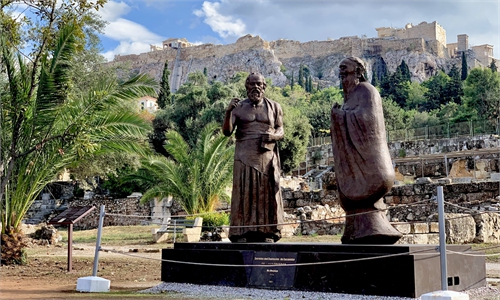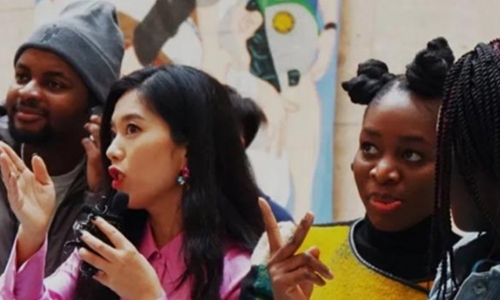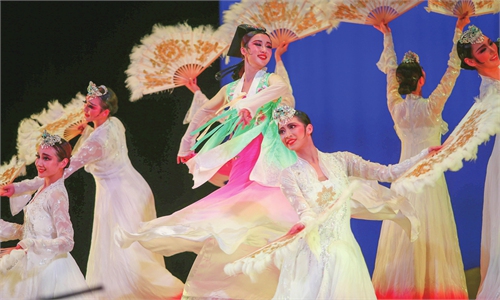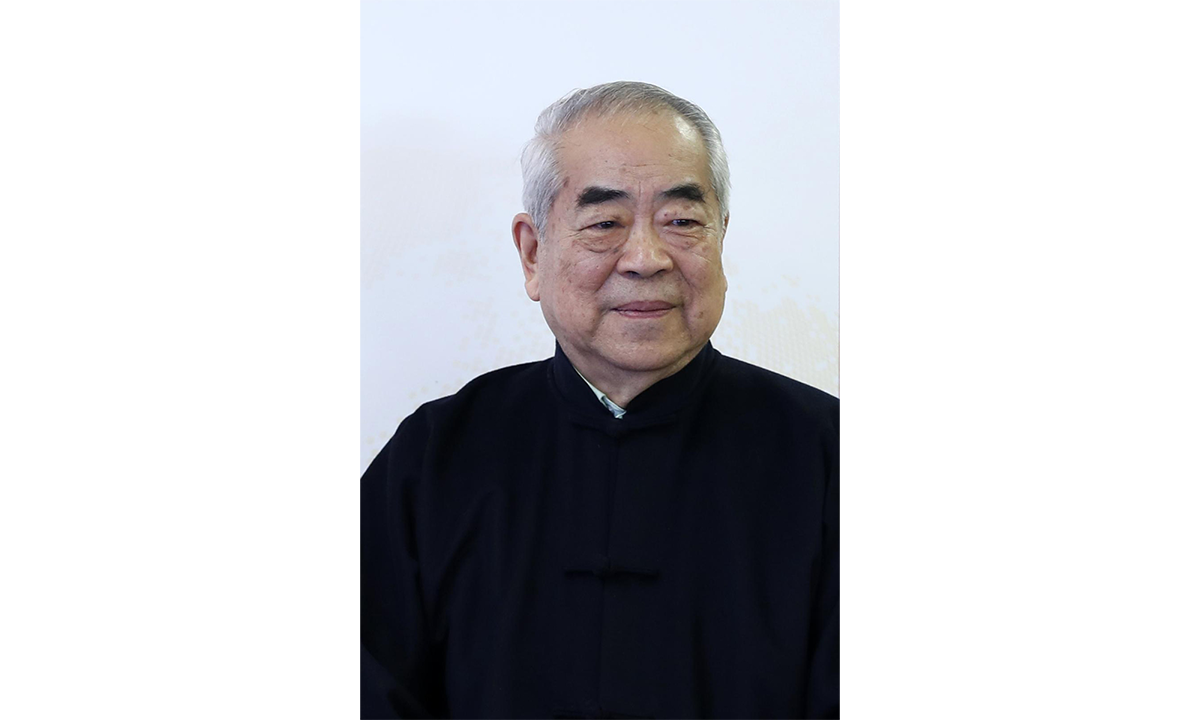
Fan Zeng Photo: VCG
Editor's Note:
Located in a small alley in Beijing's Xicheng district is renowned art gallery Rong Bao Zhai. As a centuries-old art gallery dedicated to promoting Chinese aesthetics in painting, Rong Bao Zhai often welcomes visitors from all over the world.
Since January, the gallery has become even busier as a large number of people have come to see its most recent exhibition, which is dedicated to Chinese art master Fan Zeng.
Displaying a total of 99 of Fan's artworks, the exhibition is called Han Mo Yuan, which means "the close bond between pen and ink."
Fan is one of the older generations of Chinese cultural workers who have spent a lifetime conveying Chinese beauty and the imbedded traditional philosophy through art. How did he transfer such profound Chinese cultural knowledge into art inspiration? And what did he do to maintain his Chinese style while winning over fans in the West?
With these questions in mind, the Global Times walked into Fan's exhibition to discover his opinions on China-West cultural communication.
This is the second issue of our Cultural Influencer series.
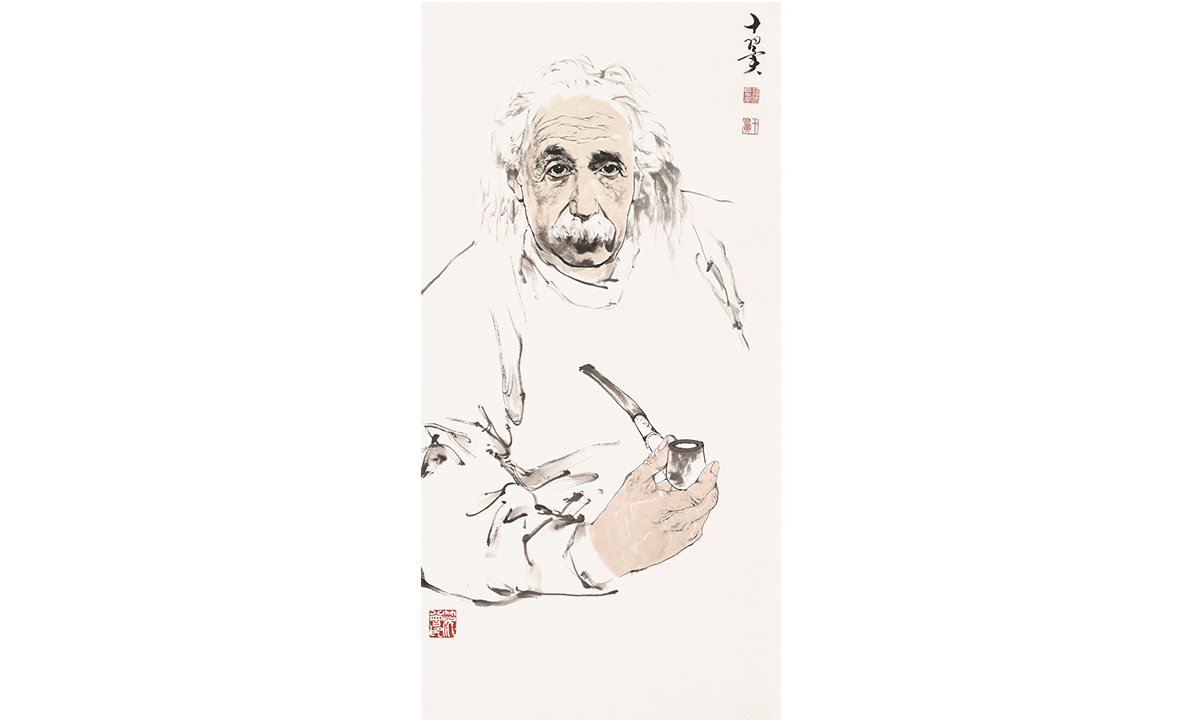
Portrait of Albert Einstein by Fan Zeng Photo: Courtesy of Rong Bao Zhai
A total of 99 art treasures created by famous Chinese artist Fan Zeng are currently on display at Beijing art gallery Rong Bao Zhai.
As a prestigious gallery in China, Rong Bao Zhai has gone through over 300 years of development, and its history is closely linked with the names of generations of important Chinese artists. The art house has also witnessed the brilliant achievements of the development of Chinese painting arts.
Fan's exhibition is the grand finale of the celebration event to mark the 350th anniversary of Rong Bao Zhai. The exhibition featuring artworks by a Chinese master of international repute in a top gallery is particularly exciting.
Fan calls himself an artist who is "fascinated with painting," and this "artist" role has not diminished his talents when it comes to being a great cultural scholar. Fan has extensive knowledge of Chinese and Western literature, history and philosophy. The all-rounder was gifted in writing and poetry, and this ability has also infused his painting with deep cultural and spiritual connotations.
Fan Zeng has been famous in the painting world for more than half a century. Since the 1980s, he has attracted increasing attention in the art circles in East Asia and the rest of the world. As Fan's international profile grew, he kept adhering to the spirit of Chinese classical art, even though his vision incorporates Western elements. This has made him a cross-cultural communicator rather than a follower of world art trends.
His vision of China-West exchanges can clearly be seen in his paintings, especially the series of "Western faces" portraits. These portraits show viewers his cross-cultural thinking at the spiritual level of art.
Across changing times, the global cultural dialogues initiated by this art veteran have been carried on by younger artists. Many young Chinese artists have been encouraged by him and continued to have such dialogues.
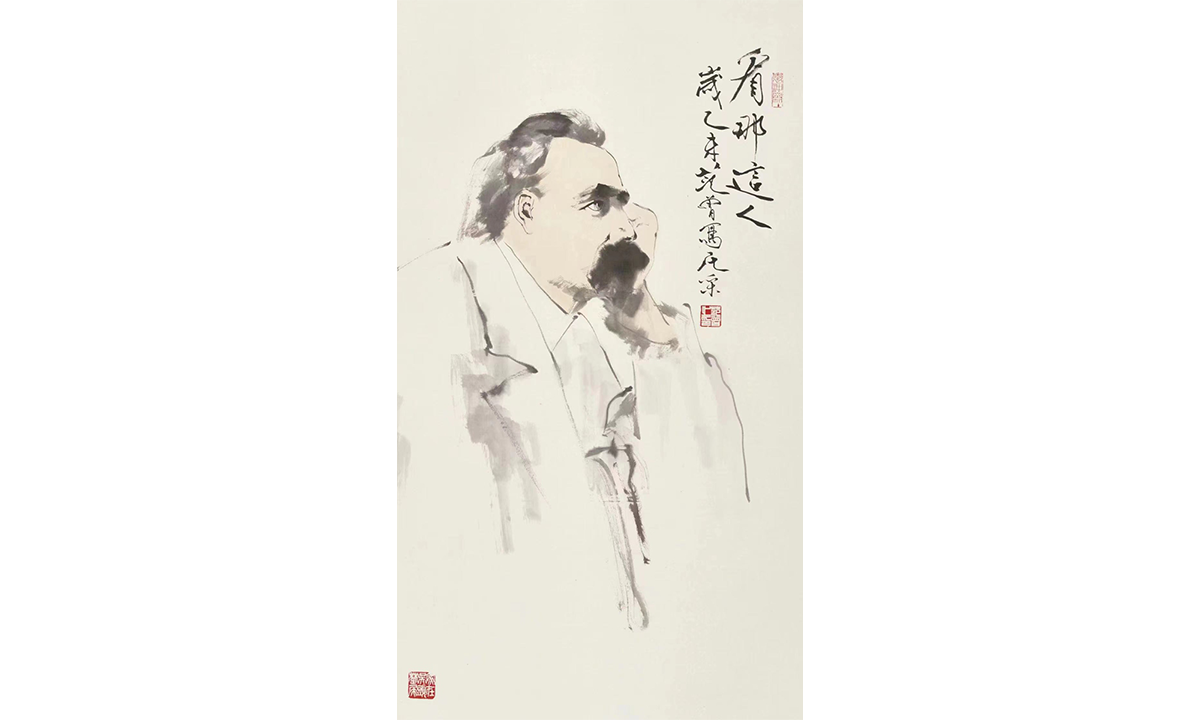
Portrait of Friedrich Nietzsche by Fan Zeng Photo: Courtesy of Rong Bao Zhai
Radiating different cultures
In Fan's exhibition, there are portraits of Western greats like Friedrich Nietzsche, Victor Hugo and Leo Tolstoy. The artist has used accurate, vivid and poetic lines to show audiences such great minds' inner spirit. At the same time, the paintings also convey unique visual styles rooted in Chinese aesthetics.
When viewing the paintings, visitors can observe how the spirit of Chinese classical art and Western modeling methods are naturally integrated, presenting a unique artistic charm. Yi Xuan, a 28-year-old art lover, was one of the fans who have observed this, and he told the Global Times that he saw "Chinese romanticism and Western realism" in Fan's paintings.
Wu Hongbin, an art critic and curator, told the Global Times that Fan's unique art style is actually rooted in the "combination of Eastern and Western artistic differences."
"Lines are basic modeling approaches in traditional Chinese art, and his lines are unique and representative of this. But at the same time, you can also perceive the artist's Western art techniques," Wu told the Global Times.
Although Fan himself also said Western "reason-guided philosophy" is different from Chinese philosophers' pursuit of nature, he is still confident and believes that his Chinese paintings can be admired by overseas audiences because they are rooted in China's profound, everlasting cultural history.
His paintings have become a window for international audiences to look into Asian aesthetics. Arts of the West and the East can therefore "collide" and complement each other.
Due to the Asian aesthetics displayed in Fan's paintings, Japan was one of the first countries in the world to show appreciation for his art.
Fan has been a main contributor to the China-Japan arts exchange dating back to as early as the 1970s. His art impressed Japan's acclaimed artist Hirayama Ikuo, who said Fan was an art leader that has inherited the excellent cultural traditions of China.
The two painters bond Chinese and Japanese cultures in art. As a Chinese art lover himself, Ikuo showed Fan his depiction of China's cultural legacy, the Dunhuang Grottoes; Fan has painted Monk Jianzhen to show the Buddhist culture shared by China and Japan.
Following Japan's appreciation, the profound Chinese humanistic spirit in Fan's art has attracted admirers from all over the world. In his paintings, overseas audiences can sense how ancient Chinese art engages in communication with the modern world in an open manner. As an artist leading the dialogue, Fan's artistic achievements and artistic ideas have become widely respected.
Over the years, the artist has been invited to participate in a series of China-West cultural and artistic exchange events, and has received various honors.
In 2010, then French president Nicolas Sarkozy awarded Fan the Knight of the Legion of Honor for his contributions to China-France cultural exchanges.
In 2011, he was made Honorary Doctor of Literature by the University of Glasgow in the UK. Fan gave a speech at the time exploring the arts of Rembrandt, one of the greatest Western painters, and Bada Shanren, a Chinese master of the late Ming (1368-1644) and early Qing (1644-1911) dynasties who was skillful in painting, calligraphy and poetry.
In 2012, the University of Alberta conferred an Honorary Degree on Fan in recognition of his contribution to the arts and education. Fan gave a speech titled "The Tranquil World" when receiving the honor.
In 2014, a China-France Cultural Dialogue event was held at the National Museum of China featuring Fan and Laurent Fabius, former French foreign minister and president of the Paris Climate Change Conference. In promoting the two countries' cultural ties, Fan gave Fabius a portrait named We Will Not Be Faithless to Human Civilization.
In August 2014, a joint exhibition of the works of Fan and French sculptor Jean Cardot was held in the National Museum of China on the 50th anniversary of the establishment of diplomatic relations between China and France.
In December 2014, Fan held a dialogue titled "The Beauty of Language" with Gabriel de Broglie, Chancelier of L'Institut de France, in Peking University.
On the occasion of the 45th anniversary of the establishment of diplomatic relations between China and Italy in 2015, an exhibition of calligraphy and painting by Fan Zeng themed "Dialogue of Civilizations" opened in Rome, Italy. Italy's President Sergio Mattarella awarded Fan the title of Commander of the Order of Merit of the Italian Republic.
A year later, Fan participated in the "China Italy Language and Culture Dialogue" event at the Oriental Art Building of Nankai University.
Fan's artworks have also been sent as "national gifts" from China to overseas guests in both Asia and Europe. One of his iconic paintings, a portrait of historical figure Charles de Gaulle, has been sent to France, and in 2014, his portrait of China's Three Kingdoms (220-280) period hero Zhao Yun was gifted to Park Geunhye, then South Korean president.
Art critic Fan Qingqiong told the Global Times that both the technique and expression of Fan Zeng's art are deeply rooted in China, adding that Fan is an outstanding representative among the Chinese artists who have built a bridge between Chinese and Western art worlds.
Guo Changhong, deputy secretary-general of the China Television Art Committee, said that Fan's artworks deliver a "completely different artistic temperament." Compared with artists who bring Chinese art to the West, Fan's works are also dedicated to China-West dialogue.
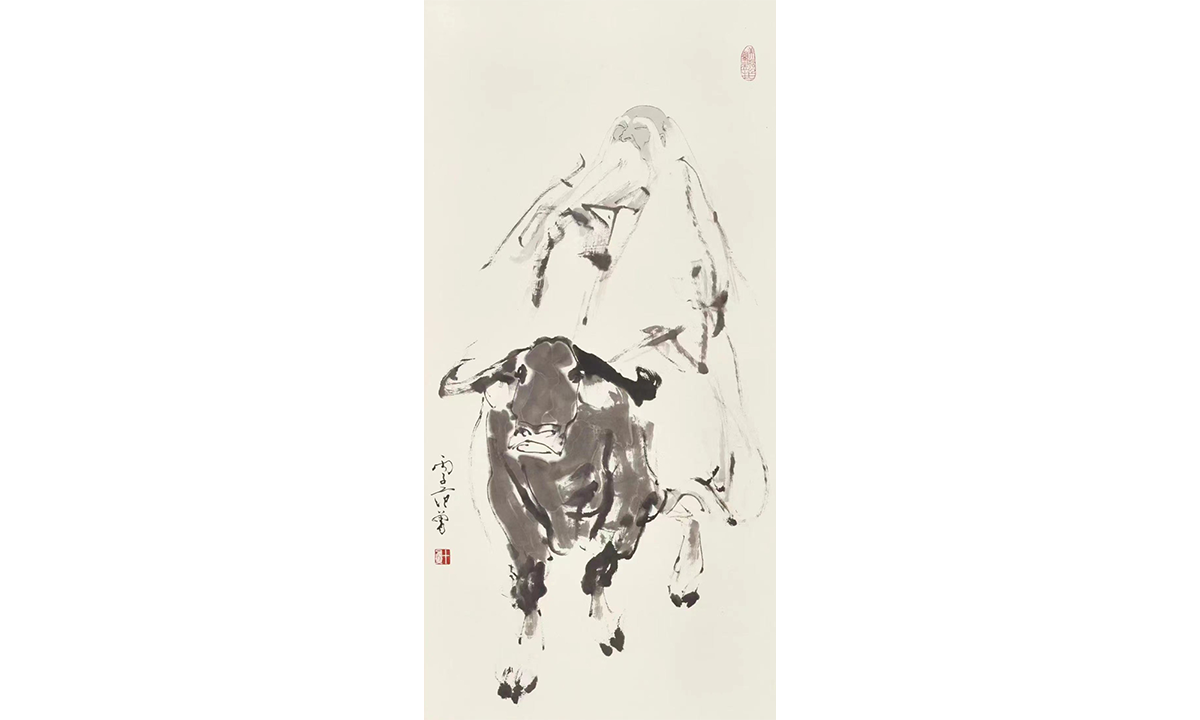
Portrait of Lao Tzu by Fan Zeng Photo: Courtesy of Rong Bao Zhai
Cultural confidence
During an interview with the Global Times, Fan said he always felt a sense of pride and confidence when talking about his Chinese identity. "It gives me a sense of contentment and happiness," he said.
Fan is also a veteran writer. For years, he has written about his deep understanding of Chinese culture in multiple essays. These writings have explored different themes such as China's philosophical, historical and cultural confidence. He noted that Western philosophers such as Heidegger and Wittgenstein thought that China's Asian philosophy is an excellent philosophical tradition and provides a window for the world to understand the country.
Talking about the concept of "people-oriented" philosophy, Fan explained to the Global Times that this concept was embedded in a section of the ancient Chinese philosophical text The Works of Mencius. Though the concept is ancient, its underlying wisdom has continued until today as an underpinning principle for the country's development.
"We should combine the ideas in ancient books with modern thinking to serve the new era," Fan remarked.
In order to stay up to date with the times, he continues to learn new things. Fan emphasized that the ability to embrace the new and other cultures is the "exciting" part of Chinese art.
"We should also absorb the good things from abroad. For example, Hollywood movies have their advantages in aesthetics. The scientific methods used to establish big scenes and create atmosphere is quite sophisticated. If we can apply these to our culture and art, of course, that is good," Fan said.
Fan also noted that he will always keep his "religion-like" passion for Chinese art and culture. "Because we all love this land, we want to become the backbone of China," Fan said during the interview at Rong Bao Zhai.
He has also quoted patriotic enthusiasm for China's literary giant Lu Xun to express his faith in Chinese culture, and implied that the artistic dialogue between China and the world is the responsibility of ensuing generations of Chinese cultural workers.
Chen Manzhi and Wu Guobao also contributed to the story

